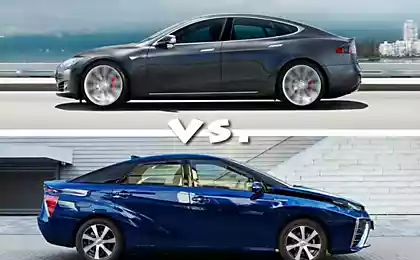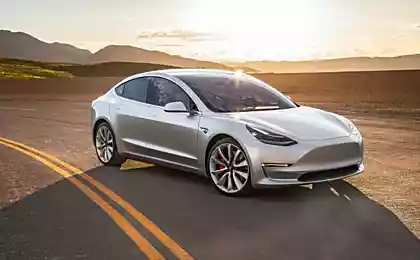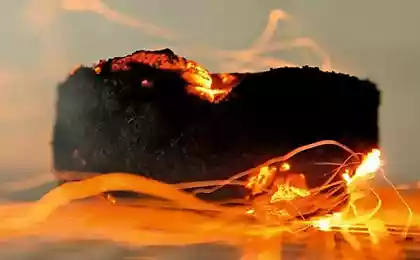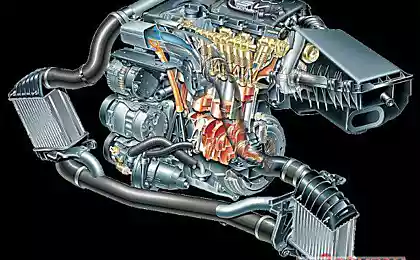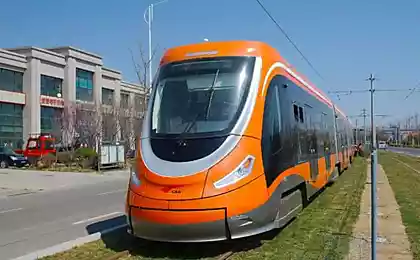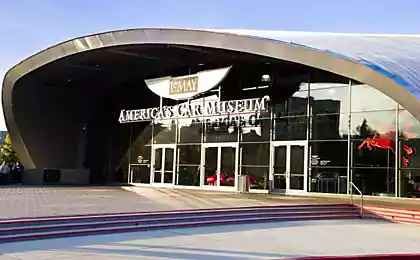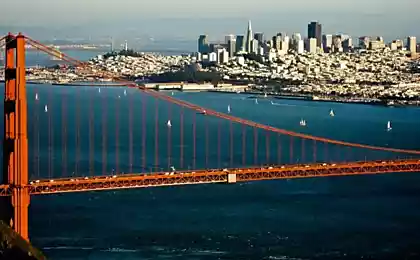497
Is there any chance of hydrogen cars

At the Zenith of summer, the Japanese automobile company Toyota has announced the start of sales of its first production FCV sedan hydrogen fuel cell: it will hit the market in April 2015. Claimed capabilities of the new hydrogen-electric car are impressive: charging for 3-5 minutes, mileage 700 km with one filling, stable start and operation at minus 30º.
This became possible due to the fact that the car itself produces electricity from hydrogen and oxygen in special elements, called energy cells. In them is the reaction of a compound of hydrogen and oxygen with the formation of a single product – water. In addition, heat is released, which is necessary for passengers in the autumn-winter period. The resulting electricity is supplied to the motors directly, and partly stored in batteries. Here's a powerhouse on wheels.
So, from a conventional electric vehicle FCV is different because he produces electricity, and from the usual hybrid with internal combustion engine – the lack of this engine, inevitable emissions of CO2 and other nasty gases. But hydrogen refueling, in fact, is a variant of already proven gas stations with compressed natural gas, the ability to easily switch to a new product.
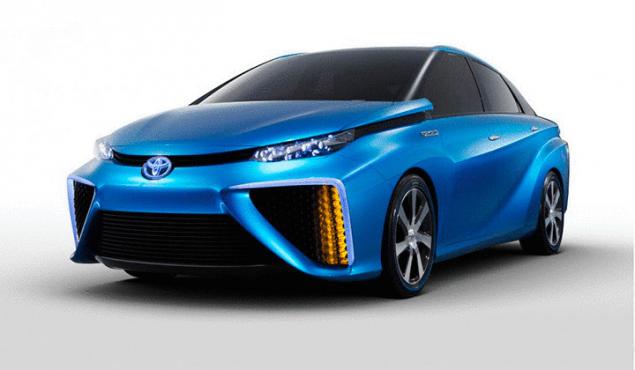
The futuristic design of the new car is consistent with its internal stuffing
Here lies the main intrigue: hydrogen is not a source product, such as natural methane gas extracted from the earth or received in the course of biological processes. This gas is chemically active and present around us in different compounds, that is, in fact, an intermediate carrier of energy. If hydrogen cars become popular, someone else will be able to capitalize on this trend, in addition to their manufacturers?
The engines of the stars Hydrogen is the simplest atom in nature. What could be simpler – a single proton in the center and one electron orbiting around it. It is also the most abundant element in our Universe, it accounts for about 89% of all matter. He's "burning" in stars, turning into helium.
On our planet we encounter it in the form of various compounds, for example in the form of water, H2O: two atoms of hydrogen and one of oxygen. Another very common substance, natural gas, methane, contains one carbon atom and four of hydrogen. Here you have two main ways of producing hydrogen on an industrial scale: to divide the atom of water or tear the carbon from the methane molecule.
Technically, the easiest method is the decomposition of water by electric current is known as electrolysis. A constant current flows through the water, and one electrode is hydrogen, the other oxygen. The product obtained is of high purity. The byproduct, oxygen, is also an important raw material not only for technology, but also to the environment – in the process of cleaning polluted waters. There is another so – called "heavy water", which is needed for nuclear power, and in the future – thermonuclear energy.
The second way is the so-called steam conversion of methane (SCM). The two-stage process: first at a temperature of 750–850º degrees based on catalytic decomposition of methane in the presence of water vapor, and then creates carbon dioxide CO2 and hydrogen. The gases are separated, and hydrogen is supplied to consumers, but greenhouse CO2 discharged into the atmosphere. There is one caveat – the process necessary to heat the same with natural gas. Yet, the PKM is the most common in the world the process of obtaining industrial hydrogen.
There are other industrial methods. For example, you can use a hot coke (a form of coal), which produces superheated steam. Or you can just heat the water to more than 2500º, and then water molecules will begin to disintegrate into atoms (though in this case it is rather difficult to prevent the subsequent recombination). That is, to obtain hydrogen, we humans can do. The issue price of the process and availability of raw materials.
Energy democracy in action we Can say with absolute certainty: if not for the concern of developed countries about the global environment, in particular the desire to reduce greenhouse gas emissions, especially CO2, in hydrogen fuel for cars there would be no need. On short distances it is an effective and practical electric cars on the existing batteries, to more traditional cars are already quite efficient engine. The transfer of vehicles to natural gas even more cleans the exhaust.
But there is another reason in the development of new automotive technologies. It is associated with the desire to use a Grand world Park of cars as the main consumer of "green" electricity. Solar energy, hydro and wind power, in the long term – generation of electricity from geothermal sources and by waves and currents objectively reduces the dependence of local consumers from the dictates of large fuel and energy corporations such as Gazprom, E. on, Exxon, etc., the Local electricity producer, who is also the consumer becomes a participant in the free market of energy, there is a democratization of production.
However, these vendors have one thing in common – their power is unstable. In the case of cloudy windless weather requires intensive work of conventional power plants, coal, gas, nuclear. Windy in the afternoon there is another problem – excess energy that I would like to stock up for the evening. The Armada of machines that need electricity – this is the global battery for green energy.
Who needs hydrogen plant Itself, when excess electricity is justified the production of hydrogen by electrolysis. And now there are countries and regions where it is economically profitable to develop electrochemical systems: is North Africa, the Mediterranean, India, Canada, Norway, USA. Each country has its advantages: in Norway many water resources, from Spain – sun, Denmark – wind. And by and large, the case goes to the fact that almost everywhere where there is a bright, strong sun or wind is stable, you can install a local electrolyzers. That is the creation of mini-plants for production of compressed hydrogen will be in itself good business.
But manufacturers of hydrogen from natural gas, especially if they do it is extracted, can also have time to sit on the "h-horse". While nothing prevents them to dump CO2 into the atmosphere, but in the future they can upload the separated carbon dioxide into underground storage. This technology is already developed, and gas can thrown on the market, hydrogen is a "green" type. The same thing can be done and manufacturers of hydrogen of coke oven method. Otherwise, hydrogen will not make any sense.
Now the skeptics say that hydrogen as fuel causes a lot of problems and dangers – a gas that easily generates with the air an explosive mixture, it has a stunning permeability, much higher than, for example, methane, and especially propane and butane. All hydrogen technology will be quite expensive, because it cannot "pile on the knee." These machines can produce mother plants, only the hands of skilled workers. The machine will require proprietary maintenance and repair and, therefore, most likely, will enter into force strict licensing service center. System hydrogen fueling also needs to be very high quality. That is, the production of technologically advanced countries rich in renewable resources, in itself and for ourselves, is fraught with non-market protection from manufacturers from outside. In contrast, for example, from conventional electric vehicles which, as well as the infrastructure to support them, can produce almost anyone.
On the other hand, not only hydrogen fuel cells alive automotive world of the future: on the approach fuel cells powered by methane, which is the normal natural gas. It is necessary to change one box to another, and now the FCV runs on gas that can be produced for livestock and other farm produced gas of Siberia, Qatar or Alaska. To refuel will be on the existing gas filling stations of methane to high pressure. Today they run the car with the engine.
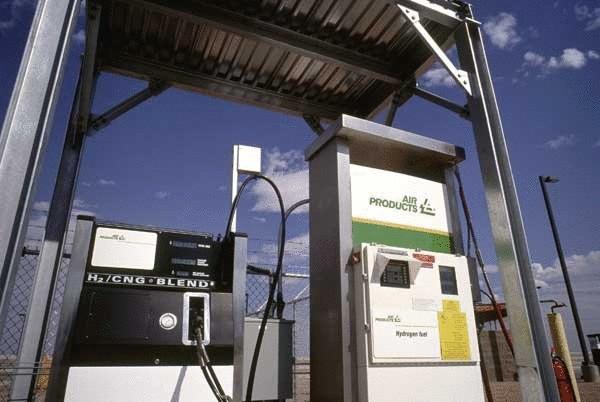
Gas stations can offer customers the choice
And finally, there is the option of using fuel cells running on methanol, the product obtained from the same natural gas. The methanol can be poured into the machine's tank at any gas station. So a draft FCV, in principle, can ensure a smooth transition to electric cars, while the gas industry might even benefit.
However, this process is very lengthy. Africa, a considerable portion of Asia and South America, where exactly there is a major increase in the fleet now, as we traveled, and will travel in vehicles with internal combustion engines using liquid fuels – petrol, solar, ethanol. So there will be new lines of segregation, splitting the world's energy and automotive market.
Constantine Ranx источник:slon.ru
Source: /users/1077

